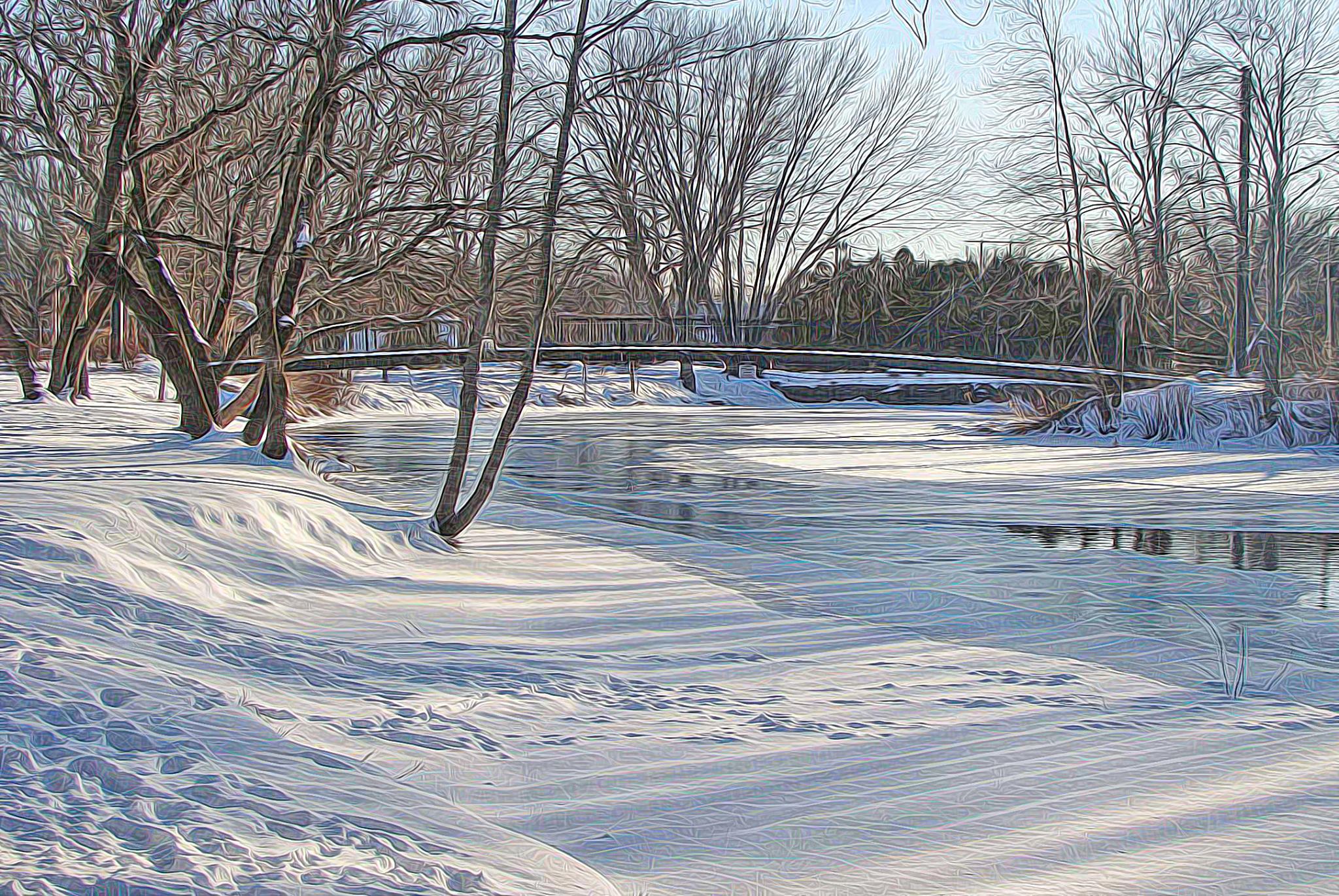The Daily Escape:

Winter’s end, NH – photo by Betsy Zimmerli
Today marks ten years since a tsunami rolled over the Fukushima Dai-ichi nuclear power plant on Honshu, Japan’s main island. The disaster was bad enough that the event is still known as 3/11 in Japan.
The tsunami and the earthquake that triggered it killed nearly 20,000 people, destroyed over 100,000 homes, and threw Japan into turmoil. The estimated remediation costs so far are about $300 billion, larger than that for any other natural disaster the world has seen.
We remember it largely for the core melt-down at the nuclear plant. That was caused by poor design: The tsunami easily topped the plant’s sea walls, flooding the underground bunkers that contained its emergency generators. The earthquake had cut any outside source of electricity, meaning that water couldn’t be pumped in to cool the reactor cores. The nuclear fuel began to meltdown.
In 2011, nuclear power provided about one-third of Japan’s electricity. Today, only four of 33 commercial nuclear reactors are operating, and only nine have met safety standards set after the disaster.
Across Japan, 53% are opposed to restarting the nuclear power plants. Naturally, that number is worse for people who opted not to return to Fukushima: just 16% said they were in favor of further restarts.
Overall, the Japanese think that both Fukushima plant’s operator, the Tokyo Electric Power Company (Tepco), and the government have lied to them. At the time of the disaster, a botched response cost then prime minister Kan his job, opening the way for Shinzo Abe.
Tepco didn’t even confirm that the meltdowns had occurred until two months after the disaster. At the time, the government and Tepco said it was a natural disaster, but a 2012 inquiry found that it was a “profoundly man-made disaster”, in part due to the chummy relationship between the Japanese regulator and Tepco.
Credibility hasn’t improved. There are 1,000 metal tanks that store contaminated water used to cool the still-hot molten cores of the three reactors. The tanks contain nearly 1.25 million tons of spent cooling water, that’s still radioactive. Tepco and the government are running out of space to build more tanks, so they want to gradually release the water into the sea (after it is decontaminated and diluted) over the next 30 years.
However, in 2018, Tepco acknowledged that 70% of the water stored at the site contained extremely dangerous radioactive contaminants such as strontium-90, rather than just the tritium Tepco said it contained, another huge black eye for the state’s and Tepco’s credibility.
Tritium is a naturally occurring isotope of hydrogen that isn’t considered dangerous to human health. It’s routinely released into the ocean by nuclear power plants worldwide.
So, just like in the US state of Texas, Japan has favored the utilities over public health, and still is doing so today. This is important since Japan’s new prime minister, Yoshihide Suga, has committed to carbon neutrality by 2050. Japan’s renewable energy sector currently produces nearly 24% of its electric needs, but the government thinks that nuclear’s contribution will need to rise from today’s 6% to 20% within 10 years to meet the goal.
But growing nuclear’s contribution to Japan’s energy needs will require rebuilding public trust in nuclear energy. There needs to be more straight talk about how to expand safely, along with clear thinking about the very cozy government-business relationship.
Japan’s handling of the immediate crisis and the long-term solutions makes any discussion of adding additional nuclear power difficult. A survey by Edelman, a public-relations firm, found that the percentage of Japanese expressing trust in their government plunged from 51% before the disaster to 25% after. It now stands at 37%. As Azby Brown of Safecast, a Tokyo NGO says:
“Trust is not a renewable resource. Once you lose it, that’s it.”
Nuclear’s weakness is that it’s expensive and dangerous, which makes new nuclear power a hard sell. It is increasingly being deployed in autocratic nations; exactly where careful regulation is least likely. Russia is exporting nuclear power plants.
China’s nuclear plants are growing as part of an effort to reduce reliance on coal. China produced four times as much nuclear energy in 2019 as it did in 2011 and has 16 reactors under construction.
Countries wanting new nuclear plants now look to China and Russia as suppliers.
Skeptical people always ask nuclear power utilities one simple question: “What will you do with the radioactive waste?” Radioactive waste has always been, and remains, an intractable problem.
And now here we are, wanting zero-emissions power. But we’re faced with the intractable problems of what will resolve the after-effects of the Fukushima disaster, and how to store the radioactive waste from other power plants.
